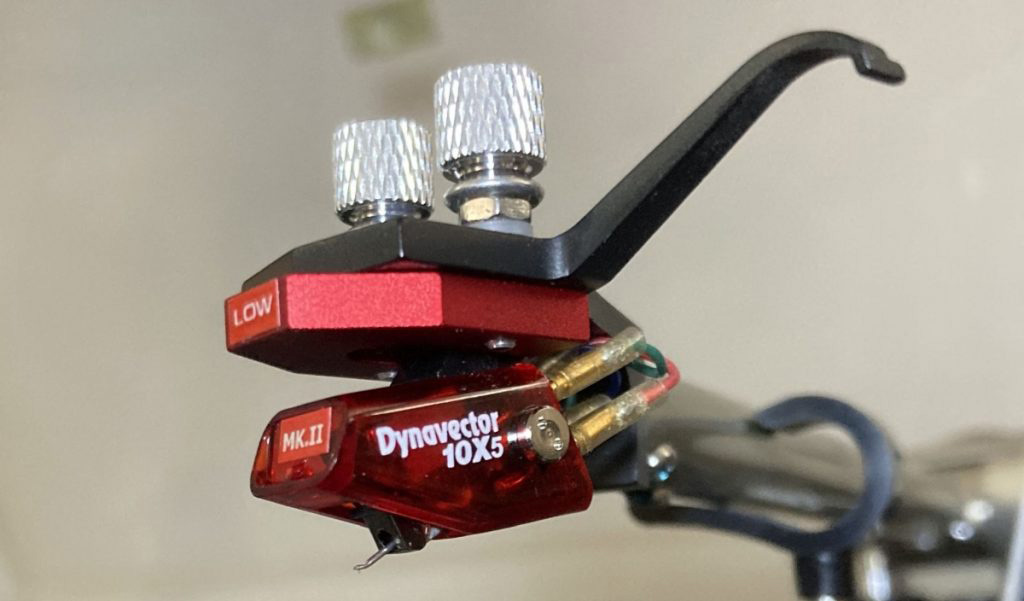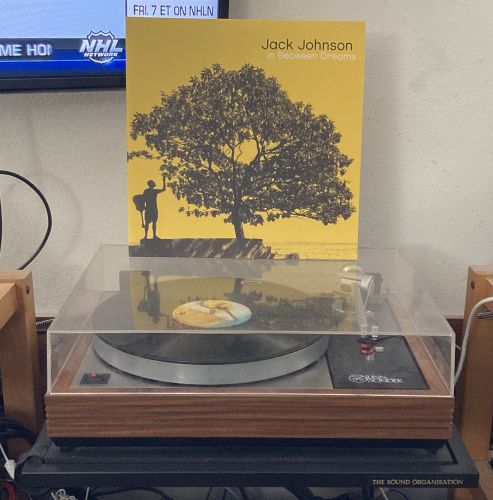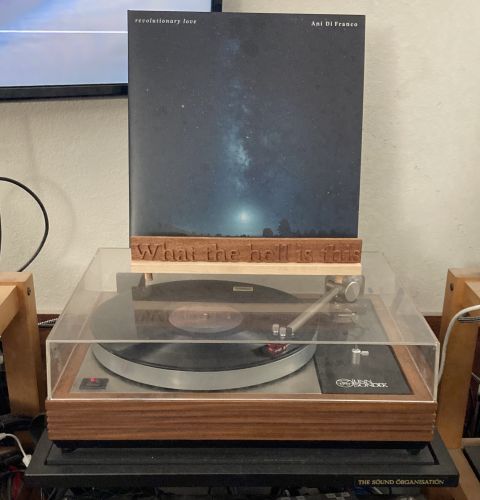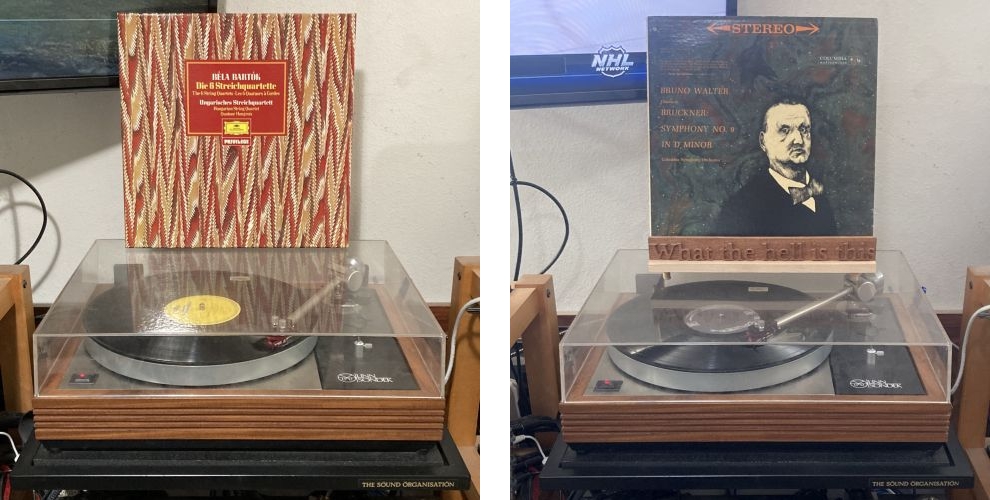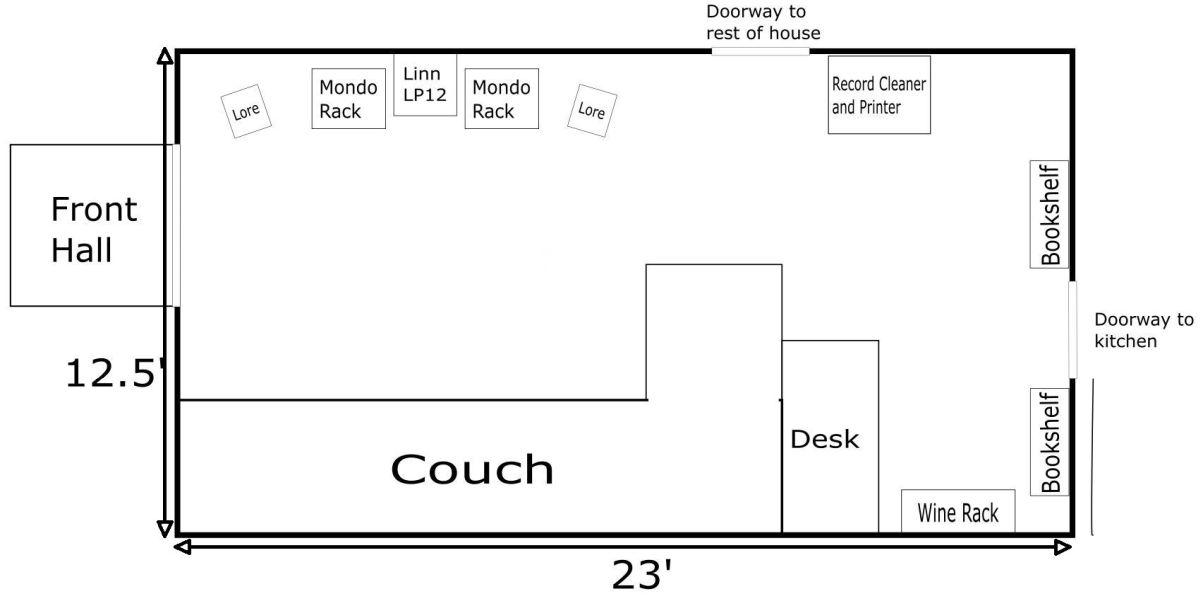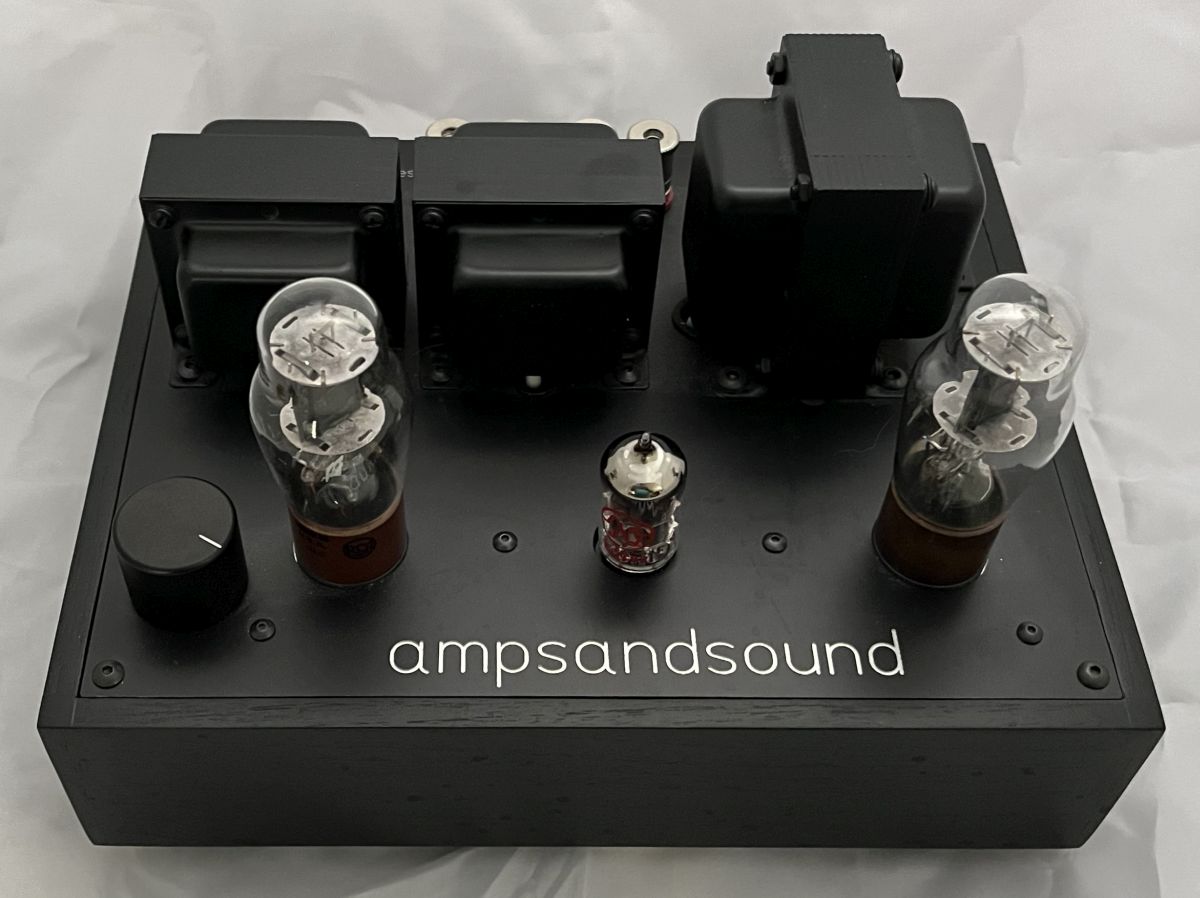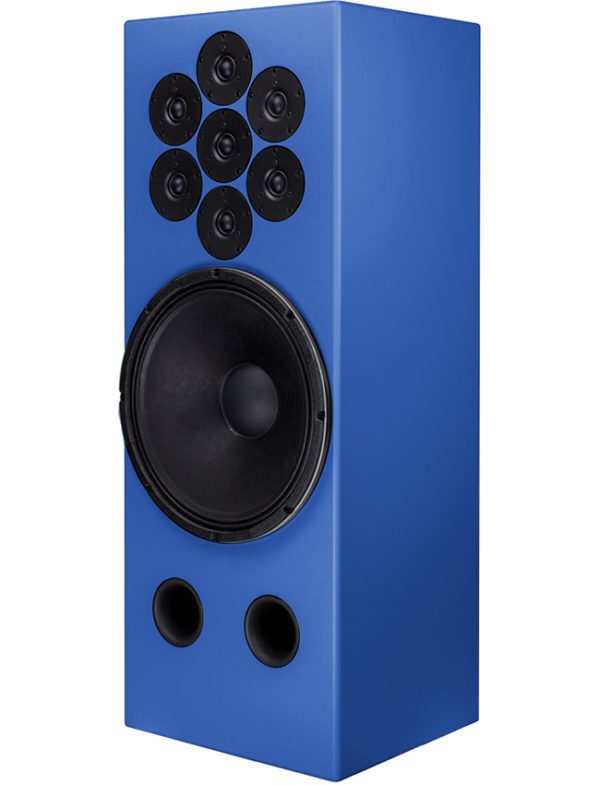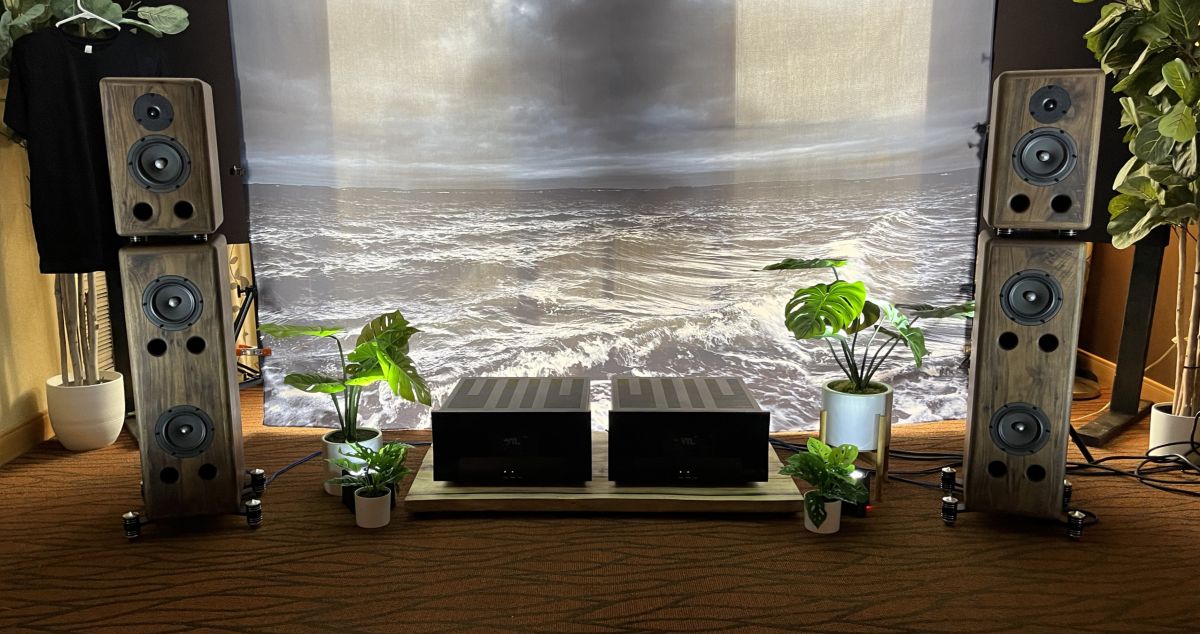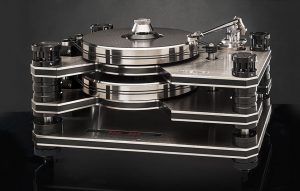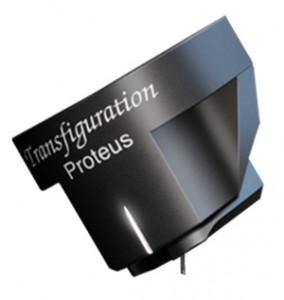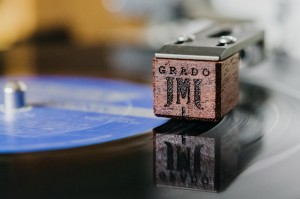There is something to be said for stability in an audio system. In this case I don't mean "stability" as in free of vibration or unwanted movement, though that is obviously essential in a quality audio setup. I mean stable as in it is good to have some pieces of equipment that don't get swapped out all too often. It helps, at least to my way of thinking, to have some parts of a system remain fairly stable over time, so you can maintain a real sense of the sound they offer up. As I've mentioned in many other articles over the years, one stable piece of my system is my Linn LP12 turntable. The Linn has been in my system since 1984 and has only had two different models of phono cartridge attached to its Linn Ittok LVII tonearm.
From the time of its purchase until 2001, I used a Talisman-S low output MC cartridge. I liked that enough that when the first one was damaged in 1987 I bought a replacement. Then in 2001 I replaced that Talisman-S with a new, limited edition (and short-lived) Dynavector Karat 19A MKII. I had wanted a Dynavector since my college days in the late 1970s when I heard a killer system with the original Dynavector 10X high-output MC mounted on a Harman Kardon/Rabco ST-4. Though I heard complete systems that sounded better at the time, there was something about the way my LPs sounded on that table that I just hadn't heard anywhere else. I knew someday I would have a Dynavector in my system.
The 19A was an attempt to bring a lower cost version of the Dynavector Karat line to the market. It used the same Karat body as the 17D2 (though black instead of gold) but with a lower cost 1.9 mm tapered aluminum cantilever while using the same Super Elliptical stylus as the 17D2. I found the cartridge a little difficult to set up with its super short cantilever, even with a WallyTractor for aligning it. However, with a little patience I got it right and it sounded spectacular. I never felt a need to replace with something better.
However, by early 2020, realizing I had been using the same cartridge for close to twenty years, and though it still sounded really nice, I figured it was time to get something new. I mean, it had gotten a lot of use over those years. Maybe keeping my LPs clean helped with its long life. I contacted Mike Pranka, Dynavector's US distributor hoping there was a chance of getting a NOS Karat 17D3, since the new version of that cartridge, the 17DX, was priced at over $2000 and beyond my means. There were not any of those available but he suggested something new, not on the web site yet or mentioned in any press. A new cartridge he asked to have made for the US market. Without asking any more questions I said, ‘sure, send it my way.'
A couple of weeks later the brand new North American exclusive 10X5 MKII Low arrived. Initially I was a little concerned, as I was hoping to move up from the old 19A, not down in the lineup. That's why I hadn't asked about their 20X2. I questioned Mike on this, and he just said that Dynavector had done a lot in the last twenty years to improve all their models, and to just give the new cartridge a listen. Over the next several months I did just that.
The new 10X5 MKII Low on the surface, looks just like the well-known entry level 10X5 MKII High output cartridge, with its distinctive red plastic outer case. The big difference of course is internal. Rated at 0.5 mV (@ 1KHz, 5cm/sec output it is noticeably higher than the 0.2 mV output of my old 19A, but still much lower than the 2.8 mV of the 10X5 MKII high output version. Its rated compliance (12 mm/N) is actually a little lower than the 19A (14 mm/M), which was a little surprising. Weighing in at 7.5 grams meant I probably wouldn't need the VPI Headshell Weight I used with the 19A. Its internal impedance of 32 ohms is also the same as the 19A. One other very significant difference between the high and low output versions is the cantilever/stylus used. Where the high output version uses a standard elliptical stylus on a 6 mm aluminum pipe, the new low output version uses a nude diamond "Shibata III" line contact stylus on a similarly sized 6 mm but "hardened" aluminum pipe. I know from experience how critical Shibata and line contact styli are for alignment.
So, out came the WallyTractor and Wally VTA gauge, along with both an old Shure balance beam VTF scale and a Neoteck Digital Turntable Stylus Force Scale I recently bought from Amazon. I also ordered a set of SoundSmith EZ-Mount screws, which it turns out really do make installation much easier. Those thumbscrews from SoundSmith are highly recommended. I also, for the first time, used a digital microscope to try to get the SRA right at 92 degrees. Easier said than done!
However, installation was easier than I expected. It took about an hour, not including a quick trip to Home Depot when I couldn't find any of my really small needle nose pliers or hemostats. I ended up using the aluminum screws from the EZ-Mount kit (1.03 grams each) and when I hooked up the microscope and measured SRA, the angle in the image (using Irfanview, a truly great free program) it was so close to 92 degrees I decided not to change it. Tracking force was set to 2.0 grams (the middle of the 1.8 to 2.2 range suggested). I set my iPhono2 (now with an iPowerX power supply) for 60 dB of gain and 330-ohm load and I was ready to try it out.
Some people dispute break-in for audio products, though I think everyone understands cartridges and speakers both have a physical need for some use to sound right. Certainly this cartridge needed some hours on it. The first LP I played (just an old non-important record to test that everything was working) sounded most unimpressive. I pulled out all the alignment tools just to check setup, and it did prove to be good. I let that LP play through twice (both sides) with the volume turned down, then listened briefly again. Surprisingly it was already sounding quite a bit better.
Over the next few weeks I played two or three records every evening trying not to form a firm opinion, but being interested in how the sound progressed. Initial impressions, which turned out to be consistent, were of an extremely low noise level while playing. I've always admired Dynavector cartridges for their apparent ability to suppress (or not exaggerate, not sure which) surface noise. The 19A was very quiet, and I often noticed how much more surface noise some of my LPs had when I played them on someone else's turntable. The 10X5 MKII Low was actually noticeably quieter between tracks or in very quiet passages.
Initially, the new cartridge seemed to be very exciting and dynamic, much in the same way you might hear in a classic Denon DL-103. From that very quiet, clean background, music really jumped out at me. As much as I always enjoyed the dynamics and expressiveness of the 19A, the 10X5 Low seemed to be the better cartridge in this regard. But at the same time, the soundstage wasn't as deep and overall the sound wasn't quite as transparent as I was used to. I hoped that would improve with more hours of use (spoiler alert, it did).
After about 50 to 60 records the sound settled in and no further improvements or changes were noticed. The quiet background and expressive dynamics had gotten even better, making for a very exciting listening experience. The soundstage widened slightly but depth improved more noticeably. Maybe it didn't quite match or exceed my previous cartridge, but the soundstage was certainly large, vivid and very stable. Individual instruments were scaled appropriately and positioned in a real space.
In terms of individual records, I started with King Crimson's first LP, In the Court of the Crimson King (Atlantic SD8245). I have two copies of this LP. One I bought in the early 1970s while in high school and the other is the MFSL reissue that I bought when it originally came out. I've always listened to the MFSL, even though they apparently played with the EQ to make it a little brighter or to bring out more detail. I went with this because my original had excessive surface noise in the quiet parts, even after multiple cleanings over the years. Yet, I decided to try the original again, and after one more cleaning on my Pro-Ject VC-S I played it. Lo and behold, it was certainly quiet enough to enjoy. In fact, it sounded superb. Being able to listen to "I Talk to The Wind" or "Moonchild" without the constant annoying surface noise was so satisfying. Now I think I prefer the original to the MFSL reissue. Neither the 19A on my Linn nor any previous turntable/cartridge I've tried since the early 1970s, had the surface noise under such fine control.
One LP I often play when trying out new gear or changes to the system is Jack Johnson's wonderful LP, In Between Dreams (Brushfire Records B0004149-01). The opening bars with just Johnson's voice and acoustic guitar sounds remarkably natural. The 10X5 MKII Low got this just right with excellent attack on the guitar. When the rest of the band joined in, led by the bass guitar, it had the weight and tone necessary to sound right. His voice floated in a very appropriately sized image on a well-defined soundstage, every bit as wide as the 19A produced, even if maybe not quite as deep.
Van Der Graaf Generator's 1975 LP Godbluff (Charisma, CAS-1109) is a longtime favorite of mine. My original import LP is long gone, but I've bought a few replacement copies through Discogs over the years. None are in great condition, but the best of them sounds pretty good. However, it has signs of wear or misuse in the inner groves, with the last half of the last track on side two "The Sleepwalkers" simply having a fair amount of noise and distortion. No, the 10X5 didn't make it sound minty fresh, but it did handle those inner grooves better than I've heard from that record before. I can enjoy listening to it again. How I would love a real top quality reissue of that LP, and no, the Back On Black reissue from 2012 is not it. That sounds just like the CD I have of that album, and very compressed compared to the original.
Wanting to try a badly warped record, I was fortunate enough to have the excellent recent release from Ani Di Franco (Revolutionary Love) in an unfortunately warped condition on disk one of the 2-LP set, probably heat damage during shipping. The record has a deep dish warp with a bad ripple along the outer inch or so. I only have the record because a friend bought it and when he arranged the return and replacement, he was told to keep the old one rather than send it back. He then gave it to me. It looked bad enough that I wondered not just if there would be any audible effect, but whether or not it was even playable. I was quite shocked at how well the Dynavector/Ittok combination handled that LP. There was no audible effect from the warp and no large excursions on speaker's woofers. After that, I stopped worrying about other LPs in my collection that might be warped, as very few have warps approaching the severity of that Di Franco disk.
Over the past year or two I've found myself revisiting my classical LPs more than I had over the past several years. Though most of the LPs referenced in my articles over the years have been popular, prog rock or singer/songwriter records, about half of my LP collection is actually classical music. For reasons I can't fully explain, I find the 10X5 MKII Low to be encouraging me to dig deeper into my classical collection. I like string quartets in general, and love the quartets by Bartok. A box set of Bartok's Six String Quartets by the Hungarian String Quartet (DG Privilege 2728 011) had great tone and vibrancy especially on the cello, with the necessary weight and power that instrument needs. It's not often I sit through all three LPs from this set in one session, but this time I couldn't imagine not listening to the entire set.
I've recently been trying to familiarize myself with some of the symphonies of Anton Bruckner, mostly as a remembrance of the late Art Dudley who had suggested them to me several times during the Listener days. I have $1 bargain bin LP of Bruckner's 9th (Bruno Walter, Columbia Symphony Orchestra, Columbia MS6171). The sound of this early 1960s (non 6-eye) Columbia LP could have been a tough listen. The music and performance are beautiful (to this untrained Bruckerian ear) and the recording seems quite excellent. However, the LP itself had obviously lived a rough live, and the noise level, mostly of the pop and click variety, could have been too distracting to enjoy. Yet, somehow with the 10X5 MKII Low the noise is pushed off to the sides and though certainly present, just less irritating. It really allowed to dive into the music and thoroughly enjoy it. I'll never claim to understand Bruckner's music, but will likely be adding more LPs of his music to my collection.
Two records you probably won't see too often in audiophile reviews elsewhere, but I that I find to be very telling are The Fibonaccis 45-rpm 12" single Tumor / Slow Beautiful Sex and Romeo Void's early four track EP Never Say Never (415 Records 415A-0007). I have rarely heard a punchier, more alive sounding mix on a rock track than Tumor, and the 10X5 MKII Low just nailed it. Good lord, that was shake the walls and get up and dance time! On the Romeo Void EP, the title track "Never Say Never" was spectacular. I love a track where the bass takes precedence over the guitar, and here, the powerhouse bass line, the crunchy, gritty guitar and wailing sax have never sounded better. All were distinct and clear yet still had the rough raw edge that the music required.
Thinking back on an old review I read many years ago in either Stereo Review or High Fidelity of an early version of the High Output Dynavector 10X, where they seemed critical of MC cartridges in general for their tendency to sound bright or harsh and their need of a properly matched higher mass tonearm. I think of how far we've come in terms of the general acceptance MC cartridges as the standard and norm for high end LP playback. At no time, when loaded properly (I used 330 ohms) did this cartridge ever sound bright, hard, etched or exhibit any other such annoyance. The highs were extended and smooth, yet detailed and airy. Sibilants were never accentuated. At the other end, bass was strong, powerful deep and always in control It was never anything less than thoroughly enjoyable.
It proved an ideal match the Ittok arm. Dynavector cartridges in general have always seemed to be highly compatible with a wide array of arms and I see no reason to think this model wouldn't work just as well in other high quality arms with similar effective mass (11.5 g).
People looking and ready to spend thousands of dollars on a high end cartridge probably won't be interested in the new 10X5 MKII Low. Dynavector makes several models that are much more expensive and are probably more refined cartridges for that upscale market. For those of us who look for both high quality sound and high value, I do know I can safely and enthusiastically recommend the new 10X5 MKII Low output as a truly fine cartridge. This particular one has been paid for and is staying in my system.
10X5 MKII Low Cartridge
Retail: $750
Dynavector-USA




